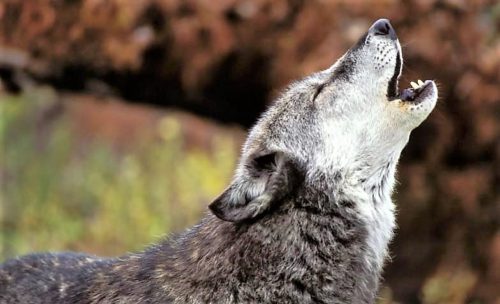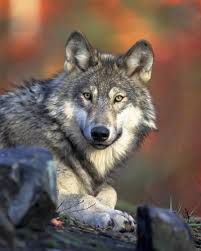“Save our wolves!”
The ongoing battle…
Save Our Wolves! How to Save the Creatures Who Howl At the Midnight Sky.

“The iconic Algonquin Wolf is the only threatened species in Ontario that you can hunt. The Ministry of Natural Resources and Forestry deliberately allows people to kill this wolf.” – Dianne Saxe
LOVE THE WOLF? LET OUR ELECTED FAT CATS KNOW!
Laws to protect endangered Canis lupus — the wild wolf — have been in and out of favour for decades. Especially in North America and Northern Europe. Punched back and forth like a hot volleyball.
In 1973 President Richard Nixon signed The Endangered Species Act into law. The U.S. Supreme Court called it “the most comprehensive legislation for the preservation of endangered species enacted by any nation.” They were right. President Nixon is still respected around the world for the ESA. Including here in Canada. Along with Teddy Roosevelt, Richard Nixon is a hero of mine.[1]
Last year, we read this headline. “President Joe Biden’s administration is sticking by the decision under former President Donald Trump to abolish protections for gray wolves across most of the U.S.”[2]
In the decades between, no President has matched Richard Nixon’s courageous stand.
Most Presidents have struck down the protections. Groups such as Defenders of Wildlife are speaking up. As well as the Sierra Club, Center for Biological Diversity, Humane Society of the United States and others going to court to have the ESA kept in place.
==>> One such successful year was 2008. Here’s what “Saving Wolves” should look like!
“Gray Wolves Returned To Endangered Species List” a Guest Article by Marlene Affeld
Wolves are once again protected in the northern Rocky Mountains of the United States. On Tuesday, October 14th, 2008, a court victory for environmentalists returned gray wolves to the Endangered Species List.
In a written ruling handed down in Missoula, Montana, Federal Judge Donald Molly announced this. “The northern Rocky Mountain Gray Wolf is returned to the list of endangered and threatened species. With each of its component populations having the same status under the Endangered Species Act.” Twelve groups had challenged the United States Government’s decision in February 2008 to delist the gray wolf in Idaho, Montana and Wyoming.
Passionate in their commitment to protect gray wolves, the challengers refuted claims that the reintroduction of the magnificent animal had been a success. They feared that delisting the species would lead to hunting of wolves, sanctioned by the authority of the individual states.
Before the early settlers arrived, gray wolves ranged across the continental United States and Canada.
As the settlers moved in and encroached on the wilderness, the once massive herds of bison, elk and deer were scattered or annihilated. The starving wolves began to attack domestic livestock. And the settlers retaliated.
US government agencies and ranchers paid a rich bounty on the pelts of wolves trapped or shot by hunters. Even though wildlife studies have shown that wolves have minimal negative impact on deer and elk populations. They feed primarily on sick, weak or disabled individuals.
Recent Wolf History
Until the reintroduction of the species in the early 1980s, gray wolves had all but disappeared in the mainland United States. At that time wolves began colonizing northwestern Montana near Glacier Park. In 1995 and 1996, sixty-six wolves from Canada were released in Yellowstone National Park. In the hope that they would survive and multiply.
Since the release, the wolf population has increased through scattering and natural reproduction. US Forest Service studies report over 1200 wolves in Montana, Idaho and Wyoming.
The gray or timber wolf is a social animal and lives in family-centered packs. Which bond together to hunt large prey and to defend their territory against other wolves. Montana has 73 packs with 415 total. This estimate includes 38 breeding pairs.
Wolves normally have 4 to 6 pups per litter. Mineral County conservatively reports that there are 36 wolves in 7 packs. Mineral County represents less than one percent of Montana’s land mass. But it has 18% of the state’s Canis lupus population.
More Wolf Facts
The average pack is about 6 to 8 animals. The pack grows and shrinks depending on the season. In the spring and summer months, wolves focus on raising their young. So they stay in small groups to feed their pups. In the winter months, wolves form larger packs to help hunting and traveling. Wolves range over large distances with a territory size that varies from 50 to 1,000 square miles.
The timber wolf is a magnificent creature. Canis Lupus plays a critical role in the natural ecosystem by restoring balance to Montana’s diverse wildlife population. The unique experience of encountering a wolf in the wild is a rare gift. A breath-taking, heart-pounding moment that few will ever have the chance to enjoy.
With the reinstatement of the endangered species designation, perhaps the midnight howl of the great gray forest hunters will be heard by future generations.
- “Thanks, Marlene, for your insightful article.” – Brian
AND YOU’VE GOTTA READ WOLFBLOOD — MY MOST POPULAR ANIMAL STORY: “HAPPY ENDING!”
 “I JUST READ WOLFBLOOD AGAIN FOR GOOD MEASURE. ONE FOR ANY WOLF LOVER. ENJOYED IT BUT WISH IT WAS A FULL LENGTH NOVEL.” – Gina Chronowicz @ginachron
“I JUST READ WOLFBLOOD AGAIN FOR GOOD MEASURE. ONE FOR ANY WOLF LOVER. ENJOYED IT BUT WISH IT WAS A FULL LENGTH NOVEL.” – Gina Chronowicz @ginachron
“GREAT SHORT STORY! DOES REMIND ME OF CALL OF THE WILD, WHITE FANG…” – Evelyn @evelyn_m_k
An “absorbing and loving” tale in the Jack London Tradition! Story of a lonely Northern Wolf and it’s longing for a place in the sweeping evergreen wilderness. FREE TO READ ==> WOLFBLOOD: A Wild Wolf, A Half-Wild Husky & A Wily Old Trapper
FOOTNOTES:
[1] “The great question of the Seventies is shall we make our peace with Nature? And begin to make reparations for the damage we have done to our air, to our land, and to our water.” – Richard Nixon. Among his many other accomplishments for protecting our Living World is the Environmental Protection Agency (EPA). See The Environmental Legacy of President Nixon.
[2] “Last year, we read this headline…” See Western Landowners Alliance.
For more on the history of hunting wild wolves, see WOLF HUNT: Wolfers of the Old West & Canada.
About the Guest Author:
Montana writer Marlene Affeld’s articles have appeared on ArticlesFactory. Her most recent work is “The Decline and Resurgence of the American Bison.” And “The Resurgence of Wild Turkeys in Montana.” Source: Free Guest Posting Articles from ArticlesFactory.com.
SAVE OUR WOLVES! How to Save Wolves – Endangered Species Act
Howling wolf, wolf facts, wolf howling, wolf hunt, wolf pack, Wolf Protection, wildlife. Endangered animals, endangered species, endangered species act, gray wolves, Montana wolf pack, Wolf Awareness Week.
Posted May 20, 2022












